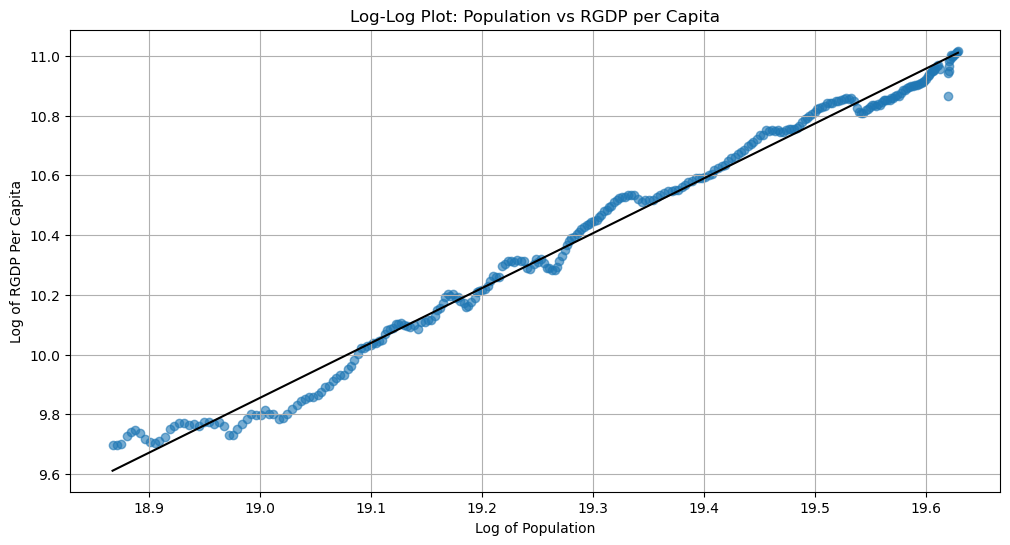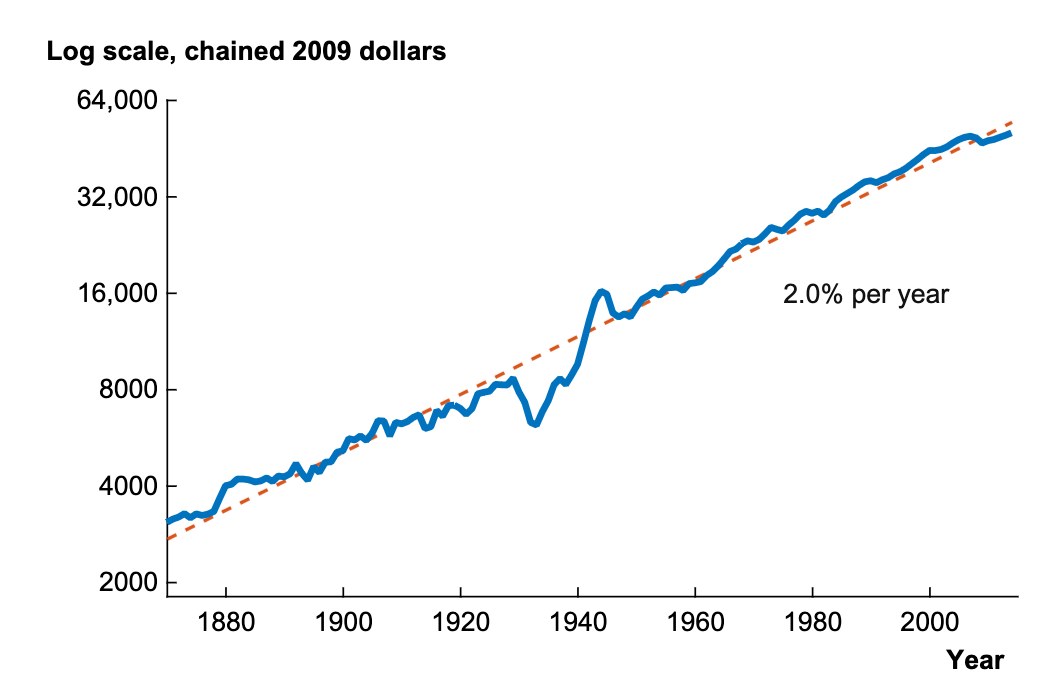A few years ago, Matt Yglesias’ book One Billion Americans bounced around the indigo blob, running the usual circuit of podcasts and opinion pieces while stirring up the usual policy debates. Most books do little to change peoples minds, yet I get the sense that Yglesias marginally shifted the consensus towards immigration, pronatal policy, and YIMBY. He achieved this by making a solid case for growth-oriented policy changes and then just slapped on the flashy title “One Billion Americans”.
But nobody really took idea of one billion Americans literally. In all the podcasts and book reviews, nobody thought to ask, “what would the American economy look like with 1 billion people? How rich would they be?”
I make a few attempts to estimate this and I get answers ranging from “very rich” to “extremely rich”[1]. If these numbers are even remotely true, proponents of progress should be fanatical about the prospect of 1 billion American citizens.
Extrapolating population vs. GDP
Spreadsheet can be found here and code for the plots can be found here.
Throughout U.S. history both population and real GDP per capita have grown steadily. So we can just extrapolate RGDP to higher population levels:

A simple linear regression suggests that real per capita GDP would be over $228k, almost 4 times what it is today. That’s about how much American RGDP per capita has grown since the 1950’s.
But linear models aren’t usually a good fit for parameters that exhibit exponential growth. Let’s try a log-log plot:

Now when we extrapolate, we get a RGDP/capita of over $450k, over 7 times today’s wealth.
The first number seems semi-plausible, but the second one is crazy high. It implies nearly unimaginable level of wealth. I’m tempted to believe in the gods of straight lines, but let’s try a different method.
Extrapolating GDP per capita growth
US GDP per capita has been growing at 2% for nearly 150 years:

The US population has been growing by roughly 1% for most of its history, only deviating significantly from that pace starting in 2008.

So what would happen if we returned to a 1% population growth rate and maintained the growth rate of GDP per capita[2]? Then the US would reach a population of 1 billion in 108 years from now (2132), resulting in a per-capita GDP of $540K.
This is even bigger than the last section. If I instead assume GDP/capita growth slows to 1%, get a GDP per capita of $182K, similar to our first estimate (though the RGDP vs GDP distinction makes comparisons harder).
Someone more qualified, please help
I would like to see someone more qualified answer this question. If these numbers are even remotely true, then simply staying the course and growing the American economy over the next century would create radical abundance.
I think there’s a case to be made that these extrapolations are accurate conditional on the U.S. actually growing. But the U.S. isn’t really going to grow anymore. The world population growth rate fell to 1% back in 2019 and the American growth rate is projected to fall to 0.14% in the next few decades. The U.S. population stands at about 335 million right now and is projected to peak at 370 million in the 2080’s.
If we optimistically extrapolate to 400 million Americans by the end of the century, we get an RGDP per capita of $73K, slightly above what it is today. It’s pretty depressing to think that we could go through 3 generations of stagnant living conditions, but this is the prediction of standard models of economic growth when population flattens out[3].
Like projections past, we’ll inevitably fall short of our lofty expectations. But that doesn’t mean we shouldn’t try to stay afloat; immigration, pro-natal policy, and land-use reform can keep us at the 0.5% pace we’re at now and deliver significant material progress.
My takeaway from all this is that steady growth remains underrated. If we can find a way to grow sustainably and over the long term, it will remake the world many times over. This is the progress studies thesis in a single graph.
Further Reading
The End of Economic Growth? Unintended Consequences of a Declining Population
A recent paper is able to explain many between-country differences in growth rates using the number of working age adults rather than raw population: The Wealth of Working Nations.
This post by Alex Tabarrok on the paper “From Population Growth to Firm Demographics: Implications for Concentration, Entrepreneurship and the Labor Share”
The Effect of Population Aging on Economic Growth, the Labor Force and Productivity
Population Growth and Technological Change: One Million B.C. to 1990
Bryan Caplan’s book Open Borders offers a good review of the economics of immigration. He also has some lecture notes on the topic.
Our World in Data: What is economic growth? And why is it so important?
- ^
By leveraging Cunninham’s law, dear reader, I hope we can get the attention of an economist who can provide us a more rigorous answer.
- ^
Note that this is achievable in the U.S. by doubling international immigration.
- ^
